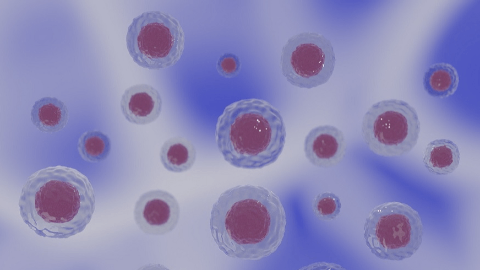预约演示
更新于:2025-05-07
Selectins
更新于:2025-05-07
基本信息
别名- |
简介- |
关联
61
项与 Selectins 相关的药物靶点 |
作用机制 P-sel抑制剂 |
最高研发阶段批准上市 |
首次获批国家/地区 美国 |
首次获批日期2019-11-15 |
靶点 |
作用机制 P-sel抑制剂 [+1] |
在研机构 |
原研机构 |
最高研发阶段临床3期 |
首次获批国家/地区- |
首次获批日期1800-01-20 |
靶点 |
作用机制 E-sel抑制剂 |
最高研发阶段临床2/3期 |
首次获批国家/地区- |
首次获批日期1800-01-20 |
73
项与 Selectins 相关的临床试验NCT06439082
A Phase III, Multicenter, Randomized, Placebo Controlled, Double-blind Study to Assess Efficacy and Safety of Crizanlizumab (5 mg/kg) Versus Placebo, With or Without Hydroxyurea/Hydroxycarbamide Therapy, in Adolescent and Adult Sickle Cell Disease Patients With Frequent Vaso-Occlusive Crises
A phase III, multi-center, randomized, placebo-controlled, double-blind study to assess efficacy and safety of crizanlizumab (5 mg/kg) versus placebo, with or without hydroxyurea/hydroxycarbamide therapy, in adolescent and adult Sickle Cell Disease patients with frequent vaso-occlusive crises.
开始日期2024-10-24 |
NCT05469828
Crizanlizumab Improves Tissue Oxygen Supply Demand Matching in Patients With Sickle Cell Anemia
Hypothesis
Efficient unloading of oxygen to regions of high metabolic demand requires a healthy microvasculature to sense local oxygen tension and regulate flow, accordingly. In sickle cell disease patients, the investigators have demonstrated oxygen supply-demand mismatch, or SDM, in proportion to anemia severity. SDM occurs in both the peripheral circulation and the brain, and four characteristics: 1) Hyperemia beyond expected for the level of anemia, 2) Corresponding loss of vascular dilatory reserve, 3) Impaired oxygen unloading to the tissues, and 4) Tissue hypoxia. In sickle cell disease, red blood cell (RBC) and white blood cell (WBC) adhere to vascular endothelium triggering transient or irreversible microvascular damage as well as releasing vasoactive substances that contribute to microvascular dysregulation. The investigators postulate that ongoing microvascular damage/dysregulation in the setting of increased total blood flow contributes to SDM. The investigators believe SEG101, by lowering RBC and WBC adhesion to the microvasculature, will improve SDM and tissue oxygenation.
Objectives
Primary - The investigators will test whether SEG101 improves SDM in patients with sickle cell anemia by measuring the change in tissue oxygenation measured by near infrared spectroscopy (NIRS).
Secondary/Exploratory - The investigators will identify end-organ disease and whether improvement of SDM by SEG101 occurs in patients with sickle cell anemia.
Efficient unloading of oxygen to regions of high metabolic demand requires a healthy microvasculature to sense local oxygen tension and regulate flow, accordingly. In sickle cell disease patients, the investigators have demonstrated oxygen supply-demand mismatch, or SDM, in proportion to anemia severity. SDM occurs in both the peripheral circulation and the brain, and four characteristics: 1) Hyperemia beyond expected for the level of anemia, 2) Corresponding loss of vascular dilatory reserve, 3) Impaired oxygen unloading to the tissues, and 4) Tissue hypoxia. In sickle cell disease, red blood cell (RBC) and white blood cell (WBC) adhere to vascular endothelium triggering transient or irreversible microvascular damage as well as releasing vasoactive substances that contribute to microvascular dysregulation. The investigators postulate that ongoing microvascular damage/dysregulation in the setting of increased total blood flow contributes to SDM. The investigators believe SEG101, by lowering RBC and WBC adhesion to the microvasculature, will improve SDM and tissue oxygenation.
Objectives
Primary - The investigators will test whether SEG101 improves SDM in patients with sickle cell anemia by measuring the change in tissue oxygenation measured by near infrared spectroscopy (NIRS).
Secondary/Exploratory - The investigators will identify end-organ disease and whether improvement of SDM by SEG101 occurs in patients with sickle cell anemia.
开始日期2024-07-01 |
申办/合作机构 |
NCT05146739
A Phase 1 and Pharmacokinetic Study of Uproleselan (GMI-1271, NSC #801708) in Combination With Fludarabine and Cytarabine for Patients With Acute Myeloid Leukemia, Myelodysplastic Syndrome or Mixed Phenotype Acute Leukemia That Expresses E-selectin Ligand on the Cell Membrane and is in Second or Greater Relapse or That is Refractory to Relapse Therapy
This phase I trial tests the safety, side effects, and best dose of uproleselan in combination with fludarabine and cytarabine in treating patients with acute myeloid leukemia, myelodysplastic syndrome or mixed phenotype acute leukemia that has come back (relapsed) or does not respond to treatment (refractory) and that expresses E-selectin ligand on the cell membrane. Uproleselan binds to E-selectin expressed on endothelial cells of the bone marrow and prevents their interaction with selectin-E ligand-expressing cancer cells. This may prevent leukemia cells from being sequestered in the bone marrow niche and escaping the effect of chemotherapy. Chemotherapy drugs, such as fludarabine and cytarabine, work in different ways to stop the growth of cancer cells, either by killing the cells, by stopping them from dividing, or by stopping them from spreading. Giving uproleselan in combination with fludarabine and cytarabine may enhance their activity.
开始日期2023-10-10 |
申办/合作机构 |
100 项与 Selectins 相关的临床结果
登录后查看更多信息
100 项与 Selectins 相关的转化医学
登录后查看更多信息
0 项与 Selectins 相关的专利(医药)
登录后查看更多信息
26,378
项与 Selectins 相关的文献(医药)2025-12-31·Platelets
Transcriptomic and functional characterization of megakaryocytic-derived platelet-like particles: impaired aggregation and prominent anti-tumor effects
Article
作者: Suwunnakorn, Sumanun ; Perera, Minoli A. ; Whalen, Michael ; Mariani, Vera ; Rashid, Kameron ; Horvath, Anelia ; Lee, Norman H. ; Maggirwar, Sanjay B. ; Sidahmed, Alfateh ; O’Brien, Travis J. ; Garofano, Kaitlin
2025-12-31·Hematology
The effect of physical cues on platelet storage lesion
Article
作者: Liu, Qi ; Yao, Chunyan ; Wang, Lu ; Cheng, Lihan ; Diao, Ronghua ; Wang, Shichun
2025-12-31·Cell Adhesion & Migration
Dual implication of endothelial adhesion molecules in tumor progression and cancer immunity
Review
作者: Cavin, Sabrina ; Chriqui, Louis-Emmanuel ; Perentes, Jean Yannis
202
项与 Selectins 相关的新闻(医药)2025-05-05
May 01, 2025 -- Lyell Immunopharma, Inc. (Nasdaq: LYEL), a clinical-stage company advancing a pipeline of next-generation CAR T-cell therapies for patients with cancer, today announced that an abstract highlighting new clinical data from the Phase 1/2 trial of LYL314 (formerly IMPT-314) in large B-cell lymphoma will be presented as an oral presentation at the International Conference on Malignant Lymphoma (ICML) 2025 taking place in Lugano, Switzerland June 17-21, 2025.
LYL314 is a dual-targeting CD19/CD20 chimeric antigen receptor (CAR) T-cell product candidate in development for patients with aggressive large B-cell lymphoma. LYL314 has received Regenerative Medicine Advanced Therapy and Fast Track designations from the U.S. Food and Drug Administration for the treatment of patients with relapsed and/or refractory diffuse large B-cell lymphoma in the 3rd or later line setting.
Details of the presentation are below:
LYL314, a CD19/CD20 CAR T-cell candidate enriched for CD62L+ stem-like cells, achieves high rates of durable complete responses in R/R large B-cell lymphoma
Session Name: Focus on New Cellular Therapies
Presentation Date & Time: June 18, 2025, 5:40 pm CEST (11:40 am ET)
Presenting Author: Akil Merchant, MD, Associate Professor and Co-Director of the Lymphoma Program at the Samuel Oschin Cancer Center, Cedars-Sinai Medical Center, Los Angeles, CA
Presentation Number: 106
Location: Room B
Lyell is a clinical-stage company advancing a pipeline of next-generation CAR T-cell therapies for patients with hematologic malignancies and solid tumors. To realize the potential of cell therapy for cancer, Lyell utilizes a suite of technologies to endow CAR T cells with attributes needed to drive durable tumor cytotoxicity and achieve consistent and long-lasting clinical responses, including the ability to resist exhaustion, maintain qualities of durable stemness and function in the hostile tumor microenvironment.
The content above comes from the network. if any infringement, please contact us to modify.

快速通道细胞疗法免疫疗法加速审批临床研究
2025-05-02
4月28日上午,庆祝中华全国总工会成立100周年暨全国劳动模范和先进工作者表彰大会在北京举行,2426人受到表彰,包括1670名全国劳动模范和756名全国先进工作者。其中,中山大学副校长、中山五院院长林天歆教授荣获“2025年全国先进工作者”称号。全国先进工作者林天歆教授从医近30年,林天歆坚守医者仁心,始终奋斗在临床、教学、科研、管理一线,是同事同行眼里的“拼命三郎”,是老百姓心中的“中国好医生”,是国家卫生健康突出贡献中青年专家、中组部“万人计划”科技创新领军人才、2030国家重大专项首席科学家、国家杰出青年科学基金获得者,是中华医学会泌尿外科学分会常委兼秘书长、中国医师协会泌尿外科医师分会副会长、广东省医学会泌尿外科学分会主委,曾获国家科技进步奖二等奖(第一完成人)、全国创新争先奖、广东省科技进步奖一等奖、广东省岗位学雷锋标兵等荣誉,享受国务院政府特殊津贴。他勇攀高峰以创新技术护佑生命膀胱癌作为泌尿系统肿瘤,其发病率高、致死率高,严重危害男性健康。林天歆深耕泌尿系统肿瘤精准诊疗及转化研究,待病人如亲人,不管是病房还是手术室都能看到他忙碌的身影,经他治愈的泌尿系肿瘤患者整体5年生存率可达70%,远高于全国水平。他在国内率先建立膀胱癌微创精准诊疗体系,制定膀胱灌注的“中国方案”,在全国600多家医院推广应用。在国内首创的无痛诊断术、膀胱癌术式和国产机器人手术不仅实现了国内泌尿学科的跨越式发展,达到国际领先水平,更令患者受益,推动我国膀胱癌5年生存率提升10%,具有重大临床意义和社会价值。林天歆带领团队突破多项卡脖子技术,研发的尿液DNA甲基化诊断膀胱癌新技术,只需取50毫升尿液即能检测膀胱癌,不但减少了患者膀胱镜检查的痛苦,更推动了早期膀胱癌诊出率从32.7%提高到79.2%,已获中国医疗器械注册、美国FDA“突破性医疗器械”认定;开创膀胱癌微创保功能系列术式,成功保留患者控尿功能和性功能,从此改变我国膀胱癌治疗模式,纳入中国泌尿外科诊治指南;牵头联合研发国产腹腔镜手术机器人,将手术费用降低到2/3,极大减轻患者经济负担。他万里援疆让南疆群众家门口“医”路无忧受中组部选派,林天歆在2019年11月至2021年7月奔赴新疆,担任喀什地区第一人民医院院长,制定“双百”目标,即“每年转诊人数少于100人”和 “进入全国地市级医院前100名”,带领来自广东的100多名援疆专家,在当地推行临床多学科诊疗模式,以“院包学科群”方式,引进100多项新技术、新项目。他将“输血”转为“造血” ,推行“师带徒” ,通过广东援疆专家与当地民汉骨干师徒结对,培训地区医护逾万人次。他亲自担任教学督导培训师资,共培养国家级师资36人、自治区师资168人。在全国创新实施首个“援疆研究生特派计划” ,立足新疆,开展新疆常见多发病的科学研究。他牵头编写 《基层全科医师手册》,免费为村医提供教材并同步开展培训,赴喀什12个县市及南疆四地州开展健康义诊,为当地留技术育人才。在林天歆的带领下,经过近2年的不懈努力,受援医院成功建成南疆第一个生殖辅助医学中心、国家心衰中心、国家高级卒中中心、国家紧急救援中心南疆分中心。当地转诊人数从2400人降到270多人,严重多发伤急症患者抢救成功率由50%提升到98%,受援医院综合排名跃升到全疆前三、南疆第一,为南疆社会稳定发展提供了坚强保障。他医者仁心勇于担当铸就大医精诚在2020年新冠疫情爆发初期,面对疫情肆虐,林天歆放弃春节假期,针对诊治难点,迅速组建了一支30人的研发团队,在一个月内研发了新冠肺炎AI辅助诊断系统,可20秒内识别新冠病毒,准确率达95%以上,作为联合国适宜推广技术在全球10多个国家应用,为全球疫情防控贡献力量。在喀什两次突发疫情中,林天歆秉承“生命至上、人民至上”理念,敢于担当,不分昼夜投身疫情防、控、治、保、稳全链条工作,带领受援单位成为南疆唯一新冠定点救治医院,相关工作受到国家、自治区及地区高度评价。在突发事件处置中,林天歆迅速靠前指挥,带领全院职工闻令而动,及时启动大规模突发事件应急预案,集中全院优势资源,制定“一人一策”和“一人一团队”患者救治方针,建立科学有效的从临床救治到心理康复的全链条综合诊疗方案,相关经验形成了“五院方案”,受到国家和省级专家组的充分肯定。他深耕基层让适宜技术和人才落地生根为解决基层看病难问题,林天歆联合全国泌尿外科同行,以全国“U医公益行”“走遍中国前列县(腺)公益讲座”“广东省医学会泌尿外科分会学术健康直通车”等一系列大型活动为载体,结合其在云南、山东、新疆等地建立的专家工作室,通过走进市县乡村,将义诊、公益手术、技术带教、健康科普送到基层,累计获益病友超过10万人次。作为华南地区泌尿外科腔镜培训总教官,他在多地创建腔镜微创技术培训中心,从边远地区到辐射“一带一路”沿线国家,播撒医术火种,累计培养2000名泌尿骨干,以健康中国助力乡村振兴。林天歆简介林天歆,一级主任医师、二级教授,博士生导师,国务院政府特殊津贴专家,全国先进工作者。现任中山大学副校长、医学部副主任,中山大学附属第五医院院长,中山大学孙逸仙纪念医院泌尿外科学科带头人。兼任中华医学会泌尿外科学分会常委/秘书长、中国医师协会泌尿外科医师分会副会长、广东省医学会副会长、广东省医学会泌尿外科学分会主任委员等职务。国家杰出青年科学基金获得者、中组部“万人计划”科技创新领军人才、2030国家重大专项首席科学家、国家重点研发计划(合成生物学)首席科学家、国家卫生健康突出贡献中青年专家、科技部中青年科技创新领军人才。以第一完成人获国家科学技术进步奖二等奖、全国创新争先奖、广东省丁颖科技奖、广东省科技进步奖一等奖、广东医学科技奖一等奖、吴阶平泌尿外科医学奖、中山大学芙兰奖。长期致力于膀胱癌微创精准诊疗体系建立与推广应用,在人工智能技术开发与应用、尿液无创精准诊断、术前转移风险预测、膀胱癌术式创新、膀胱癌治疗新靶点等方面取得突出的成绩。主要科学贡献及成果包括:一、国际首创膀胱癌人工智能(AI)数字化诊断新技术和影像学筛查新冠系统针对人工判断微小病灶易漏诊和效率低,复发率高。研发人工智能马桶,一泡尿发现膀胱癌的准确性达90%;研发AI膀胱镜技术,使术中微小病灶诊出率提高了35%;研发淋巴结转移AI病理诊断技术使微转移诊断率提高到98.3%,阅片工作量减少90%(Lancet Oncol封面文章)。新冠疫情暴发后,面向国家重大需求和人民生命健康,林天歆教授团队研发基于胸部CT和X线的人工智能新冠快速筛查系统,实现20秒内识别新冠肺炎,准确率达95%以上,显著减少了新冠肺炎的漏诊率,帮助患者获得最及时的救助。相关成果发表在Cell、Nat Biomed Eng,并列入广东省科技抗疫三大成果之一,还被推荐给联合国作为适宜推广技术,在全球10多个国家应用,为全世界抗疫作出重要贡献。二、开发膀胱癌尿液精准诊断新技术,提高早期和复发肿瘤诊出率林天歆教授开发了基于尿液DNA甲基化的新技术,在早期、微小、残留和复发膀胱癌的诊断上具有显著优势,已授权专利并转化临床应用,并且该方法已被纳入《中国膀胱癌诊断治疗指南》,相关研究成果发表在J Clin Invest,并获得国家发明专利。该诊断产品与欧盟同类产品相比,位点更少、成本更低、敏感性更高,具有临床应用和推广的优势,目前在全国200家医院应用。目前已获中国体外诊断试剂注册证、欧盟的CE认证和美国FDA“突破性医疗器械”认定。三、建立膀胱癌术前精准肿瘤分期体系,准确预判淋巴转移和肌层浸润,指导手术切除范围手术前肿瘤淋巴转移分期和肌层浸润状态的精准预测,决定手术方式和范围,以及新辅助化疗方案。林天歆教授开发了基于影像组学与临床因素的复合预测模型,将膀胱癌患者淋巴转移预测准确性从原来CT的50%提高到92.6%,基于MR影像组学预测淋巴转移的模型将MR诊断准确性提高到90.0%,相关成果发表在Clin Cancer Res、EBioMedicine上。四、创立腹腔镜膀胱癌根治新术式、制定膀胱癌药物治疗“中国方案”林天歆教授建立腹腔镜根治性膀胱切除+回肠新膀胱术式,并证明腹腔镜术式不但肿瘤根治效果相当,而且创伤少,恢复快,保留排尿和性功能更好。相关成果发表在Eur Urol,Br J Cancer等杂志上,并纳入中国泌尿外科诊治指南,改变了我国膀胱癌的治疗术式;此外,还推动治疗用卡介苗在预防中高危NMIBC复发的广泛应用,并建立免疫治疗预测方法,构建预测膀胱癌预后的新免疫分型。五、阐明膀胱癌淋巴转移机制和发现阻断转移新靶点淋巴转移是膀胱癌主要的转移方式和致死的主要原因,但目前缺乏针对性的治疗措施。为此,林天歆教授团队开展了系列研究,从肿瘤侵袭、淋巴管新生、免疫细胞互作等多层面系统地阐明了淋巴转移的机制,发现了多个关键的促进淋巴转移分子和治疗新靶点。最近阐明了PDGFRα+ITGA11+CAF亚群通过ITGA11-SELE配受体互作诱导淋巴管新生,并重塑细胞外基质介导肿瘤细胞侵袭浸润淋巴管,促进早期膀胱癌脉管癌栓形成的关键分子机制,有望为早期阻断膀胱癌淋巴转移提供新的干预靶点(Cancer cell)。(来源:中山大学附属第五医院官微)声 明凡署名原创的文章版权属《肿瘤瞭望》所有,欢迎分享、转载。本文仅供医疗卫生专业人士了解最新医药资讯参考使用,不代表本平台观点。该等信息不能以任何方式取代专业的医疗指导,也不应被视为诊疗建议,如果该信息被用于资讯以外的目的,本站及作者不承担相关责任。
临床研究
2025-05-02
调节性 T 细胞(Tregs)的 30 个标记物在其识别、功能、分化成熟、抑制活性以及在多种疾病中的作用等方面都具有重要意义。FoxP3作为 Treg 谱系最关键的标记,是一种转录因子,对 Tregs 的分化、成熟及获得抑制功能起着核心作用。其基因发生突变会引发 IPEX 综合征,导致多器官自身免疫疾病。FoxP3 有多种异构体,全长变体(FL)的 Tregs 表现出更高的抑制活性和增殖率。Helios属于 Ikaros 基因转录因子家族,多数人和小鼠的 Tregs 会表达。虽其在人类 Treg 稳定性和功能的确切作用尚未完全明确,但可作为 Tregs 稳定性和纯度的监测标记,还可能与细胞激活和增殖相关。CD25即 IL-2 受体的 α 链,高表达是常规 Tregs 的显著特征之一。在 T 细胞增殖、激活诱导的细胞死亡以及 Tregs 和效应(Teff)T 细胞的功能中发挥重要作用,FoxP3 + Tregs 中 CD25 水平最高的亚群具有最强的免疫抑制活性。CD127是 IL-7 受体的 α 链,在 T 细胞的动态调节、淋巴细胞分化和细胞免疫方面有重要影响。稳态时,Tregs 表达低水平的 CD127,激活时其表达显著上调,可辅助更精准地识别 Tregs。CD39作为一种外切酶,在调节嘌呤能信号传递给免疫细胞的持续时间、强度和化学性质方面发挥关键作用。其在 Tregs 上的表达存在个体差异,在炎症部位表达较高。CD39 + Tregs 被认为具有高活性、强抑制性,能分泌 IL-10,且高表达 CD39 可维持更高水平的 FoxP3 表达。CTLA-4属于 CD28 免疫球蛋白超家族的抑制性受体,对 Treg 细胞功能至关重要。它调节 T 细胞的共刺激,持续表达,在免疫抑制活动期间高度表达,可定义具有强抑制活性的 Tregs。CTLA-4 通过与树突状细胞表面的共刺激分子 CD80/86 结合,阻止其与效应 T 细胞上的 CD28 相互作用,从而抑制 T 细胞激活,还能诱导树突状细胞表达吲哚胺 2,3 - 双加氧酶(IDO),调节免疫反应。GITR是 TNF 受体超家族成员,通过提供共刺激信号来调节免疫反应,影响 T 细胞的激活、分化、存活和记忆形成以及巨噬细胞极化。然而,其在 Tregs 中的作用存在争议,既能导致 Tregs 不稳定、细胞耗竭和抑制功能下降,又能诱导 Tregs 在体外增殖和扩增。TIGIT是具有免疫球蛋白和 ITIM 结构域的 T 细胞免疫受体,为跨膜糖蛋白受体。在 Tregs 激活后高表达,TIGIT + Tregs 相比 TIGIT - Tregs 具有更强的抑制作用,能特异性抑制促炎的 Th1 和 Th17 细胞反应,但不影响 Th2 细胞反应。此外,TIGIT 表达与 Treg 效应分子表达增加相关,如颗粒酶 B、IL-10 和纤维蛋白原样蛋白 2(Fg12)。CD120b(TNFR2)具有抗炎活性,对少突胶质细胞、心肌细胞和角质形成细胞有保护作用,通过影响不同类型免疫细胞来实现免疫抑制功能。在激活的 Tregs 上高度且持续表达,TNF-α 与 TNFR2 的相互作用对 Tregs 的激活、扩增和表型稳定至关重要,还能维持 FoxP3 启动子的去甲基化,支持 Tregs 的分化和稳定。LAP即潜伏期相关肽,是转化生长因子 -β(TGF-β)前体的氨基末端结构域,与 TGF-β 形成潜伏复合物,调节单核细胞募集。LAP + Tregs 在 Treg 特异性去甲基化区域(TSDR)高度去甲基化,在体内外均具有抑制作用。CCR6属于 C-C 趋化因子受体蛋白,在协调免疫细胞向炎症部位迁移、维持免疫稳态和免疫系统完整性平衡方面具有关键作用。在多种炎症性疾病中,CCR6 + Tregs 的比例较高。CD223(LAG-3)是一种免疫检查点受体蛋白,可抑制细胞增殖、免疫功能、细胞因子分泌和维持免疫稳态。在 Tregs 上持续表达,通过抑制促进 Tregs 在炎症部位维持的信号通路来限制其增殖和功能,但也能刺激 Treg 介导的抑制作用,还可与 CTLA-4 和 PD-1 协同增强 Tregs 的抑制活性。GARP(LRRC32)作为潜伏 TGF-β 的膜受体,调节膜结合潜伏 TGF-β 的可用性并调节其在 Tregs 和血小板上的激活。在激活的 Tregs 表面表达,是具有高抑制活性的人类 Tregs 的特异性标记。然而,GARP 与 FoxP3 的表达关系存在争议,有研究表明二者相互依赖,也有研究显示它们并非相互调节。GPA33是一种细胞表面抗原,与免疫失调相关。高表达 GPA33 可定义 CD4 + CD25 + CD127 – FoxP3 + Helios + Tregs,这类 Tregs 无法产生常规 T(Tconv)细胞效应细胞因子。CD137CD137 是 TNFR 家族的共刺激受体,可促进自然杀伤(NK)细胞增殖和细胞因子分泌。CD137 + CD154 −是抗原激活的 FoxP3 + Tregs 的标记,具有高效抑制效应 T(Teff)细胞增殖的能力,具体作用取决于免疫反应类型。Nrp-1即神经毡蛋白 - 1,参与轴突导向和血管生成。在小鼠 Tregs 中富集,在人类中表达较低。在诱导 Tregs(iTregs)表面表达 Nrp-1 可识别和分离出在炎症条件下具有卓越抑制功能的 iTreg 亚群,且在周围淋巴器官中的表达高于胸腺 Tregs。FR4是叶酸结合蛋白的异构体,在小鼠中表达,与人类 FR-δ 高度同源。FR4 过表达可增强 Tregs 在体外的增殖能力,在天然和外周 Tregs 中均有表达。CD103属于整合素 αE,通过与 E-cadherin 相互作用介导细胞粘附、迁移和淋巴细胞归巢。CD103 + Tregs 在炎症部位积累的能力增强,参与皮肤局部 Treg 功能,与 FoxP3 的高表达相关,可能增强 TGF-β 依赖的 FoxP3 表达。CD44作为细胞表面的透明质酸受体,参与细胞的运动、存活和粘附等多种过程。其配体高分子量透明质酸(HMW-HA)可促进 Treg 介导的抑制作用,且与 HMW-HA 共刺激可促进 FoxP3 的表达。CD62L即白细胞粘附分子 L - 选择素,是一种跨膜凝集素受体,可调节幼稚和中枢记忆 T 细胞进入淋巴结以及激活的 CD8 + T 细胞向病毒感染部位的迁移,使 Tregs 归巢到次级淋巴器官。CCR7参与将树突状细胞和 T 细胞定位到淋巴结,在诱导外周免疫耐受方面有重要作用,可使 Tregs 归巢到次级淋巴器官。nTregs 高表达 CCR7,而中央记忆 Tregs(cmTregs)和效应记忆 Tregs(emTregs)下调其表达。CD31(PECAM-1)是高度糖基化的 Ig 样膜受体,在免疫和血管系统中均具有粘附和信号传导功能,是 Treg 分化的标记。ICOS属于 CD28 超家族的同源二聚体蛋白,参与 Tregs 的产生、增殖和存活。在癌症中,Tregs 高表达 ICOS,其与 ICOSL 的信号通路对 Treg 介导的自身耐受至关重要。此外,一小部分 ICOS + Tregs 在正常人和小鼠的外周血中可产生 IFN-γ 和 IL-17。Gal-1即半乳糖凝集素 - 1,参与细胞生长、迁移、炎症、血管生成等多种过程,在肿瘤进展、免疫逃逸和免疫耐受中发挥作用。其对 Treg 细胞的作用具有环境依赖性,阻断 Gal-1 会显著削弱 Tregs 的抑制作用。PD-1(CD279)属于 I 型跨膜蛋白,是免疫球蛋白超家族成员。PD-1 可调节 Treg 的生成及其免疫抑制特性,在癌症中,其阻断对 Tregs 的影响存在争议,既可能降低 Treg 介导的抑制作用,也可能增强 Treg 功能;在自身免疫疾病中,PD-1 在 Tregs 上的表达与疾病相关,如在系统性红斑狼疮中,PD-1 + 滤泡调节性 T 细胞功能受损。CCR7参与免疫细胞向淋巴结的定位和外周免疫耐受的诱导,对 Tregs 归巢到次级淋巴器官具有重要意义,其表达水平在 Tregs 的不同分化阶段有所变化。Granzyme B(GZMB)在结直肠癌中,表达升高,介导肿瘤免疫,参与 Tregs 对肿瘤细胞的抑制作用,是评估肿瘤免疫状态的重要指标之一。TIM-3在多种癌症(如结肠癌、黑色素瘤)中标记肿瘤内 Tregs,其表达与 Tregs 的抑制功能增强和肿瘤生长促进相关;在类风湿关节炎中,TIM-3 表达降低与 Tregs 功能活性下降有关;在移植物抗宿主病(GvHD)中,TIM-3 表达升高与 Tregs 功能活性增加相关。LAG-3 在结直肠癌中,LAG-3 + TIM-3 Tregs 表达更高水平的 TGF-β、IL-10 和 CTLA-4,具有更强的抑制功能,参与肿瘤免疫逃逸和疾病进展的调节。 CD45RA/RO属于受体蛋白酪氨酸磷酸酶,在 T 细胞受体信号起始中发挥作用,是 Tregs 分化状态的标记。初始 Tregs(nTregs)表达 CD45RA,记忆 Tregs 通常表达 CD45RO。参考资料Gootjes, C.; Zwaginga, J.J.; Roep, B.O.; Nikolic, T. Defining HumanRegulatory T Cells beyond FOXP3: The Need to Combine Phenotype with Function. Cells 2024, 13, 941. https://doi-org.libproxy1.nus.edu.sg/10.3390/ cells1311094Santosh Nirmala S, Kayani K, Gliwin ´ski M, Hu Y, Iwaszkiewicz-Grzes ´ D, Piotrowska-Mieczkowska M, Sakowska J, Tomaszewicz M, Marı ´n Morales JM, Lakshmi K, Marek-Trzonkowska NM, Trzonkowski P, Oo YH and Fuchs A (2024) Beyond FOXP3: a 20-year journey unravelling human regulatory T-cell heterogeneity. Front. Immunol. 14:1321228. doi: 10.3389/fimmu.2023.1321228Sayitoglu EC, Freeborn RA and Roncarolo MG (2021) The Yin and Yang of Type 1 Regulatory T Cells: From Discovery to Clinical Application. Front. Immunol. 12:693105. doi: 10.3389/fimmu.2021.693105
免疫疗法细胞疗法
分析
对领域进行一次全面的分析。
登录
或

Eureka LS:
全新生物医药AI Agent 覆盖科研全链路,让突破性发现快人一步
立即开始免费试用!
智慧芽新药情报库是智慧芽专为生命科学人士构建的基于AI的创新药情报平台,助您全方位提升您的研发与决策效率。
立即开始数据试用!
智慧芽新药库数据也通过智慧芽数据服务平台,以API或者数据包形式对外开放,助您更加充分利用智慧芽新药情报信息。
生物序列数据库
生物药研发创新
免费使用
化学结构数据库
小分子化药研发创新
免费使用






